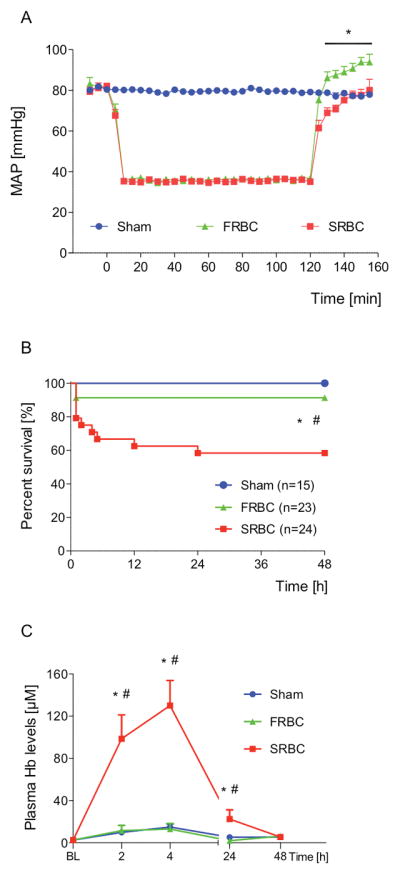Figure 1.

Hemodynamic measurements, plasma free hemoglobin levels and survival rates of mice resuscitated with PRBCs after prolonged hemorrhagic shock. (A) Mice resuscitated after two hours of hemorrhagic shock with fresh PBRCs (FRBC) had a higher mean arterial pressure (MAP) immediately after transfusion compared with mice receiving stored PBRCs (SRBC) (n=15, *P<0.001). (B) Percentages of mice surviving for 48 hours after hemorrhagic shock and resuscitation: Sham: 100%, FRBC: 91%, SRBC: 58% (*P<0.01, Sham vs. SRBC; #P<0.05, FRBC vs. SRBC). (C) Plasma extracellular hemoglobin (Hb) levels at two, four, 24, and 48 hours after resuscitation with PRBCs (*P<0.05 vs. Sham; #P<0.05 vs. FRBC, n=5–10 per time point per group). Data represent mean±SEM and were compared by 2-ANOVA (A) or Kruskall-Wallis test (C) followed by pairwise comparisons adjusted with Bonferroni correction for multiple testing or by log-rank test (B).
